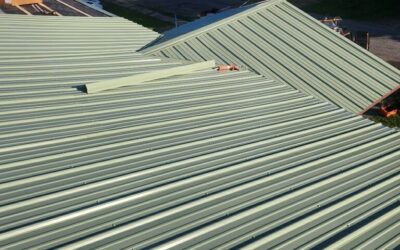Hip Roof House: Everything You Need to Know
When planning or remodeling a home, roof design plays a crucial role in functionality, aesthetic appeal, and long-term durability. One of the most popular and time-tested roofing styles is the hip roof. Known for its symmetrical appearance and superior wind resistance, the hip roof house is a favorite among homeowners and builders alike.
In this comprehensive guide, we’ll cover everything you need to know about hip roofs — from their structure, advantages, and disadvantages, to costs, variations, materials, and maintenance tips. Whether you’re building a new home or replacing a roof, understanding hip roof design will help you make an informed decision.
What Is a Hip Roof?
A hip roof (also called a hipped roof) is a type of roof where all sides slope downwards to the walls — usually at a gentle angle. Unlike a gable roof, which has two vertical ends, a hip roof has no vertical sides or “gable” ends. Each side of the hip roof typically has the same slope, creating a pyramid (for square structures) or trapezoid (for rectangular structures) appearance.
Hip roofs are incredibly popular on ranches, bungalows, cottages, and modern homes across the United States, especially in regions that experience high winds or hurricanes.
Types of Hip Roofs
Hip roofs come in several variations, each offering unique architectural appeal and structural functionality:
1. Simple Hip Roof
The most traditional type. All four sides slope down toward the walls and meet at the top to form a ridge.
2. Cross Hipped Roof
Used for L- or T-shaped buildings, this style features two hip roofs intersecting at right angles.
3. Half-Hip Roof (Jerkinhead Roof)
A hybrid design where the roof ends are partially gabled and partially hipped. This adds a unique visual element and is common in European architecture.
4. Dutch Gable Roof
This is a combination of a gable and a hip roof. It incorporates a gable at the top of a hip roof for extra attic space or ventilation.
5. Pyramid Hip Roof
All sides are equal in length and slope inward, meeting at a central point. Typically used for square buildings or small structures like gazebos.
Benefits of a Hip Roof House
Choosing a hip roof for your home offers a wide range of advantages:
1. Superior Wind Resistance
Because all sides slope downward, hip roofs are aerodynamically stable, making them ideal for wind-prone areas such as coastal regions or storm zones.
2. Drainage and Snow Shedding
The sloped design allows rainwater and snow to slide off easily, reducing the risk of water damage or snow buildup.
3. Strong and Stable Structure
The inward slope on all sides provides extra structural integrity, reducing the risk of collapse during severe weather.
4. Consistent Eaves Around the House
Hip roofs naturally create eaves on all four sides, offering uniform shading and rain protection.
5. Aesthetic Appeal
Hip roofs create a clean, symmetrical look that suits various architectural styles, from traditional ranch houses to modern designs.
6. Increased Resale Value
Homes with hip roofs often fetch higher market prices due to their structural strength and visual appeal.
Drawbacks of Hip Roofs
While hip roofs offer many benefits, there are some trade-offs to consider:
1. Higher Construction Costs
Hip roofs are more complex to build than gable roofs, leading to higher labor and material costs.
2. Limited Attic Space
The inward slopes reduce usable space in the attic, which could limit storage or make future conversions more difficult.
3. Complicated Ventilation
Hip roofs require additional planning for ventilation, especially in hot climates, to avoid heat buildup.
4. More Roofing Material Required
Because of their complexity, hip roofs require more shingles, underlayment, flashing, and framing materials.
Hip Roof Materials
The longevity and performance of a hip roof depend heavily on the materials used. Here are some popular options:
1. Asphalt Shingles
Affordable and easy to install. Suitable for many climates, including Northeast Ohio where cold, wet weather is common.
2. Metal Roofing
Durable, fire-resistant, and energy-efficient. Ideal for hip roofs due to its lightweight properties and long lifespan.
3. Clay or Concrete Tiles
Stylish and long-lasting, especially in warm climates. However, they’re heavier and may require additional framing support.
4. Wood Shingles or Shakes
Eco-friendly and attractive, but less durable in wet or fire-prone areas.
5. Slate Roofing
Elegant and extremely durable. Perfect for upscale homes with steep-pitched hip roofs, but costly and heavy.
How Much Does a Hip Roof Cost?
The cost of building or replacing a hip roof depends on factors like materials, pitch, size, and labor. Here’s a general breakdown:
| Material Type | Average Cost per Sq. Ft. | Lifespan |
|---|---|---|
| Asphalt Shingles | $3 – $5 | 15–30 years |
| Metal Roofing | $7 – $12 | 40–70 years |
| Clay/Concrete Tile | $10 – $20 | 50–100 years |
| Slate Roofing | $15 – $30 | 75–200 years |
| Wood Shingles | $6 – $9 | 20–30 years |
Installation costs can range from $8,000 to $25,000 or more, depending on roof size and complexity. Homes in Ohio cities like Cleveland, Youngstown, or Medina may see different prices based on local labor rates.
Is a Hip Roof Right for Your Home?
Here are a few scenarios where a hip roof might be a great fit:
- You live in a high-wind area and want a durable roof.
- You appreciate symmetry and clean design in architecture.
- You’re building a ranch-style or Craftsman home.
- You want eaves around the entire home for gutter installation and weather protection.
Hip Roof vs. Gable Roof: What’s the Difference?
| Feature | Hip Roof | Gable Roof |
|---|---|---|
| Slope | All sides slope down | Two sides slope |
| Attic Space | Limited | More usable space |
| Wind Resistance | Excellent | Moderate |
| Water Drainage | Very effective | Effective |
| Construction Cost | Higher | Lower |
| Aesthetic Symmetry | High | Variable |
Popular Hip Roof House Styles in Northeast Ohio
In areas like Lakewood, Willoughby, Concord, and Chardon, many older and newer homes feature hip roof styles, especially:
- Craftsman Bungalows
- Colonial Revivals
- Mid-Century Ranches
- Modern Farmhouses
- Lakefront Cottages
These roofs not only offer weather resistance against Northeast Ohio’s rain and snow but also enhance curb appeal.
Tips for Maintaining a Hip Roof
Just like any roof, hip roofs need proper care to ensure long-term performance:
1. Inspect After Storms
Check for loose shingles, damaged flashing, or sagging. Hip roofs are strong, but still vulnerable in extreme storms.
2. Clean Your Gutters
Since hip roofs have eaves on all sides, gutters must be maintained regularly to avoid water damage.
3. Look for Sagging or Leaks
The valleys where roof sides meet can collect debris or develop leaks over time. Regular inspection is key.
4. Ensure Proper Ventilation
Hire a contractor to ensure your attic is properly ventilated, especially if you experience hot summers or snowy winters.
Can You Add a Dormer to a Hip Roof?
Yes! Dormers can add headroom, natural light, and ventilation to the attic space of a hip roof. Common styles include:
- Hip Roof Dormer
- Gable Dormer
- Shed Dormer
However, adding dormers to hip roofs can be tricky due to the multiple slopes. Always consult with an experienced roofing contractor before remodeling.
Hire a Trusted Roofing Contractor in Northeast Ohio
If you’re considering building or replacing a hip roof, it’s essential to hire a local contractor with expertise in this specific roof design.
At S&K Construction And Remodeling LLC, we specialize in installing and replacing hip roofs across Youngstown, Jefferson, Ashtabula County, Cleveland, Beachwood, Twinsburg, and surrounding areas. As an Owens Corning Preferred Contractor, we use only high-quality materials and offer industry-leading warranties.
Our roofing services include:
- Hip roof installation
- Roof repairs and inspections
- Storm damage restoration
- Attic ventilation and insulation
- Seamless gutter installation
- Financing options for qualifying homeowners
Customer Reviews
⭐⭐⭐⭐⭐
“S&K Construction did an amazing job on our hip roof! They were fast, professional, and explained everything clearly. We feel much safer with this new roof.”
– Karen R., Madison, OH
⭐⭐⭐⭐⭐
“We love the new look of our house. The hip roof they installed added charm and peace of mind. Highly recommend!”
– Michael S., Concord, OH
Financing Your Hip Roof Project
Worried about upfront costs? We offer flexible financing options that make roof replacement or construction affordable. You can spread your payments over time and still enjoy a high-quality, durable roof today.
Final Thoughts
A hip roof house is a smart, beautiful, and resilient choice for homeowners who value symmetry, durability, and long-term value. Whether you’re in Cleveland Heights, Pepper Pike, or Jefferson, choosing the right roofing contractor is just as important as choosing the right roof.
If you’re ready to explore your roofing options, contact S&K Construction And Remodeling LLC today. We’ll walk you through every step — from free inspections and insurance claims to flawless installations.
Request a Free Estimate
Looking to build or upgrade to a hip roof in Northeast Ohio? Call S&K Construction And Remodeling LLC at (440) 344-8646 or fill out our contact form online to schedule your free roof inspection today.
Keywords used: hip roof, hip roof house, hip roof cost, roofing contractor in Ohio, roofing services, hip vs gable roof, hip roof maintenance, types of hip roofs, roof replacement Ohio, Owens Corning Preferred Contractor, roofing in Youngstown, hip roof dormer, S&K Construction And Remodeling
 (440) 307-2060
(440) 307-2060




